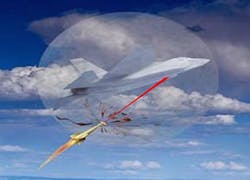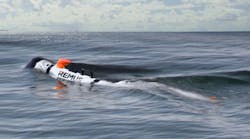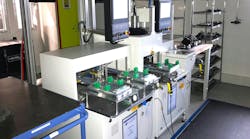ARLINGTON, Va., 22 Jan. 2013. Laser experts at Lockheed Martin Corp. will move forward with flight tests of a futuristic laser weapon system designed to protect combat aircraft against attacks from the rear under terms of $9.5 million contract modification awarded this month from the U.S. Defense Advanced Research projects Agency (DARPA) in Arlington, Va.
The contract is for the third phase of the DARPA Aero-Adaptive/Aero-Optic Beam Control (ABC) program to improve the performance of high-energy lasers on tactical aircraft against enemy aircraft or missiles in the aft field of regard.
Laser weapons experts at the Lockheed Martin Space Systems segment in Sunnyvale, Calif., will flight test an active flow control turret mounted on a business jet to validate turret requirements, design, and predicted performance of ABC technology the company developed in the second phase of the program.
The ABC program will optimize flow control for pointing angles behind tactical aircraft, as well as exploring how to synchronize ABC flow-control technology with adaptive optics.
On the current contract modification, Lockheed Martin engineers will design representative optical paths, a scaled turret, and flow control actuator system, conduct wind-tunnel testing, and mount a prototype aircraft laser-defense weapon to the test aircraft.
Adaptive optics involves manipulating the shapes of lenses and mirrors to enable high-energy laser weapons to compensate for the effects of atmospheric turbulence.
Lockheed Martin will do the work in Sunnyvale, Calif.; Fort Worth, Texas; and Orlando, Fla., and should be finished by fall 2015.
For more information contact Lockheed Martin Space Systems online at www.lockheedmartin.com/us/ssc, or DARPA at www.darpa.mil.



